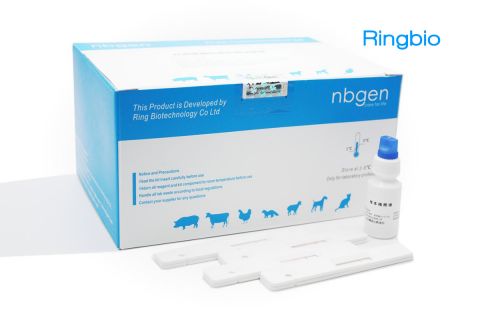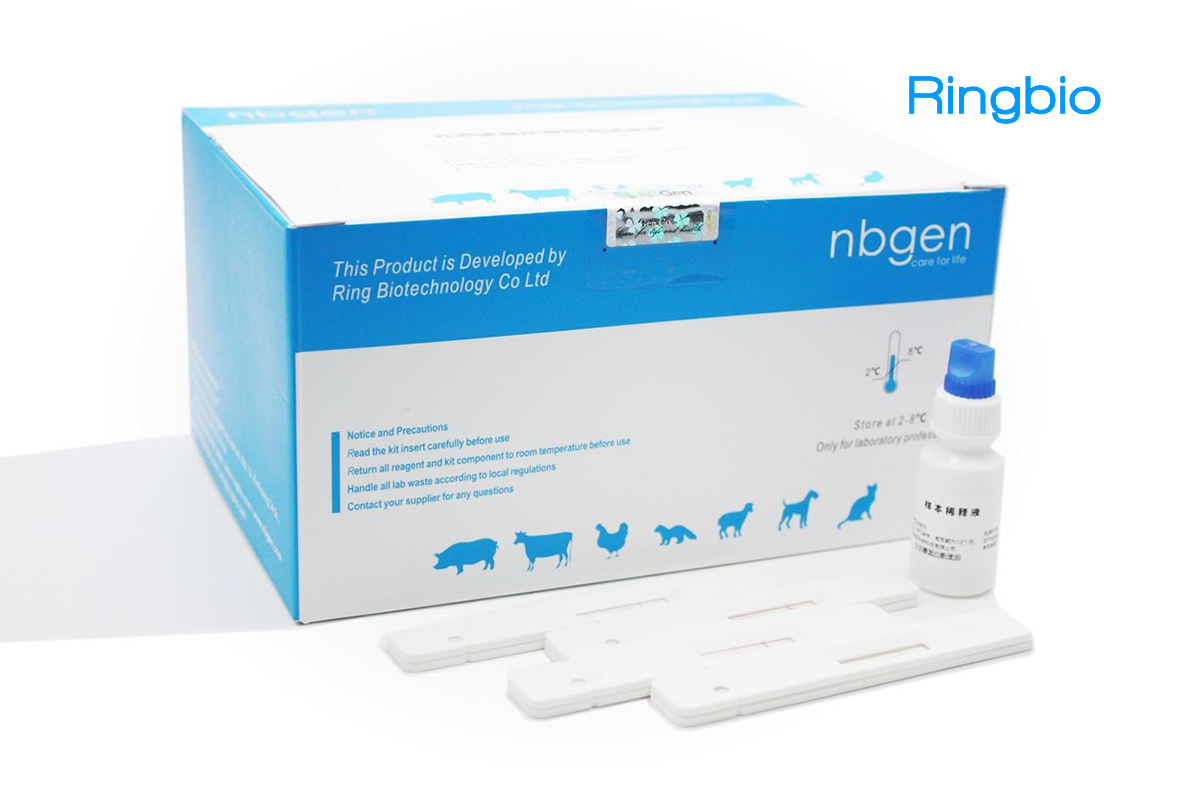
Pseudorabies virus can be transmitted via nose-to-nose or fecal-oral contact. Indirect transmission commonly occurs via inhalation of aerosolized virus. Data from England indicate that virus may travel via aerosols for up to 2 km in certain weather conditions. Other studies have demonstrated that the virus can survive for up to 7 hours in nonchlorinated well water; for 2 days in anaerobic lagoon effluent and in green grass, soil, feces, and shelled corn; for 3 days in nasal washings on plastic and pelleted hog feed; and for 4 days in straw bedding. The virus is enveloped and, therefore, inactivated by drying, sunlight, and high temperatures (≥37°C [98.6°F]). Dead-end hosts, such as dogs, cats, or wildlife, can transmit the virus between farms, but these animals survive only 2–3 days after becoming infected. Birds do not seem to play a role in transmission. Porcine pseudorabies virus gB blocking antibody ELISA Kit is used to detect the Porcine pseudorabies virus antibody in porcine serum sample.
Key facts of Porcine pseudorabies virus gB blocking antibody ELISA Kit
- Ready to use kits for vet professionals
- No special instrument required
- Only less than 60min to get visual result
- Low cost with high sensitivity
Technical details of Porcine pseudorabies virus gB blocking antibody ELISA Kit
| Product name | Porcine pseudorabies virus gB blocking antibody ELISA Kit |
|---|---|
| Product code | ZE015 |
| Principle | Indirect ELISA |
| Species | swine, porcine |
| Samples | Serum |
| Sample Preparation | If blood is collected, serum shall be separated for assay. |
| Specificity | >95% |
| Sensitivity | >99% |
| Package Size | 96T, 192T, 480T |
| Format | Readily used kit. |
| Shelf-life | 12 months |
| Storage | 2-8 ℃ in cool dark plate |
Treatment and control
-
No specific treatment, but highly effective vaccines are available
Although there is no specific treatment for acute infection with pseudorabies virus, vaccination can alleviate clinical signs in pigs of certain ages. Typically, mass vaccination of all pigs on the farm with a modified-live virus vaccine is recommended. Intranasal vaccination of sows and neonatal piglets 1–7 days old, followed by IM vaccination of all other swine on the premises, helps reduce viral shedding and improve survival. The modified-live virus replicates at the site of injection and in regional lymph nodes. Vaccine virus is shed in such low levels that mucous transmission to other animals is minimal. In gene-deleted vaccines, the thymidine kinase gene has also been deleted; thus, the virus cannot infect and replicate in neurons. It is recommended that breeding herds be vaccinated quarterly and that finisher pigs be vaccinated after levels of maternal antibody decrease. Regular vaccination results in excellent control of the disease. Concurrent antibiotic therapy via feed and IM injection is recommended to control secondary bacterial pathogens.
Extensive reading
- merckvetmanual Porcine pseudorabies virus



